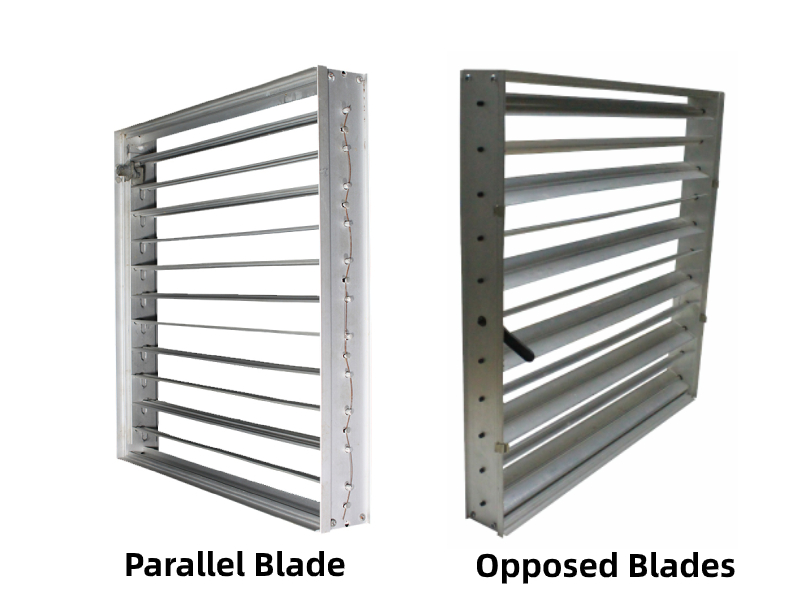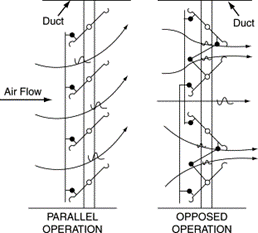Ventilation air grille diffuser
air vent manufacturer since 2002
 Vairtech
Vairtech  2025-06-11
2025-06-11
In order for a HVAC system to operate satisfactorily, it is crucial to determine the design and selection of a ventilation damper in relation to the other components within the system.
The main purpose of a ventilation air damper is to either throttle or stop the flow of air through a duct or opening, regulating the flow of air within the air filter systems to the surrounding.
In the market nowadays, Rectangular Dampers have been named as the most prominent form of damper, specifically designed for proportional controlled applications.
The modulation of damper blades will occur in one of two ways, depending on how the damper linkage is being set up.

All blades of a damper connected with a parallel type of linkages, moving together at the same frequency and in the identical direction.
Adjacent blades of a damper with an opposed type linkage turn in opposite directions.
Due to their unique blade orientation installed in a control air damper in air filter systems, they exhibit a non-linear characteristic in the relationship between flow rate and the position of the blades.
They are made up of several amount of blades, each of which is directly connected to a central spindle so that they are able to move together while adjusting the angle of inclination, Ɵ, or to the axis of duct.
With two blades or more, the spindles are linked to provide either parallel or opposed movement.

For Parallel blade air dampers, it possesses a considerably steeper and much more aggressive flow rate to damper position curve.
Parallel oriented blades will move the same way when opening and closing, and during closure, the front edge of each blade will come together with the back edge of the blade below it.
These edges overlapped to shut-off the damper, providing the blades a flat profile when fully closed. Practically, parallel blades damper characteristics are better suited for volume control air filter systems range from wide open to 75% initiate opening.
When opening and closing motion of the parallel blades, they tend to minimize the pressure drop through the damper’s blades, allowing the best orientation for maintaining air flow.
Due to the parallel blade air dampers being more sensitive to arm swings, even a slight change in damper angle may result in significant impact on the temperature paradigm.
As a result, parallel ventilation dampers are commonly applied for open / close air filter applications, directing airflow in a quick burst.
Few of the benefits of parallel blade ventilation air dampers are:-
Unlike parallel blade dampers, opposed to ventilation blades, dampers have a shallower curve with a pronounced slow increase in flow rate, commonly used for volume control modulating air filter applications ranging from wide open 100% open to 25% open.
The pressure drop is increased by the arm swing with opposing damper blades, due to it exhibiting a more proportional and regulated damping effect.
This can put undue strain on the air filter system every time the damper operates.
As a choice to consider on opposed ventilation blades dampers application:-
As a HVAC ventilation system manufacturer, Vairtech Group has a team of R&D which will always be ready to provide the appropriate advice on the ventilation blades orientation which suits all kinds of designs for HVAC air filter systems.